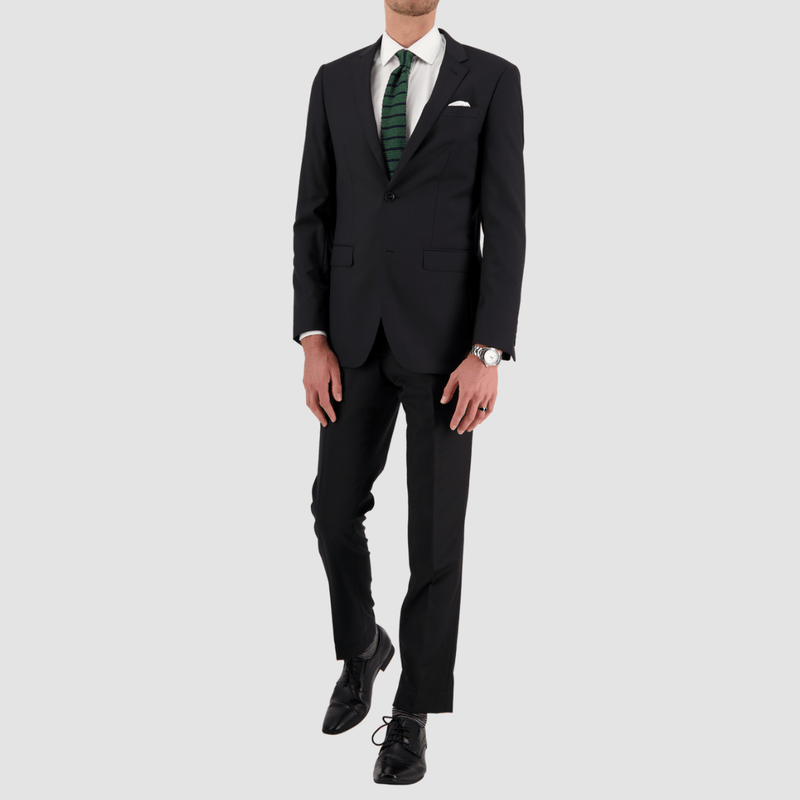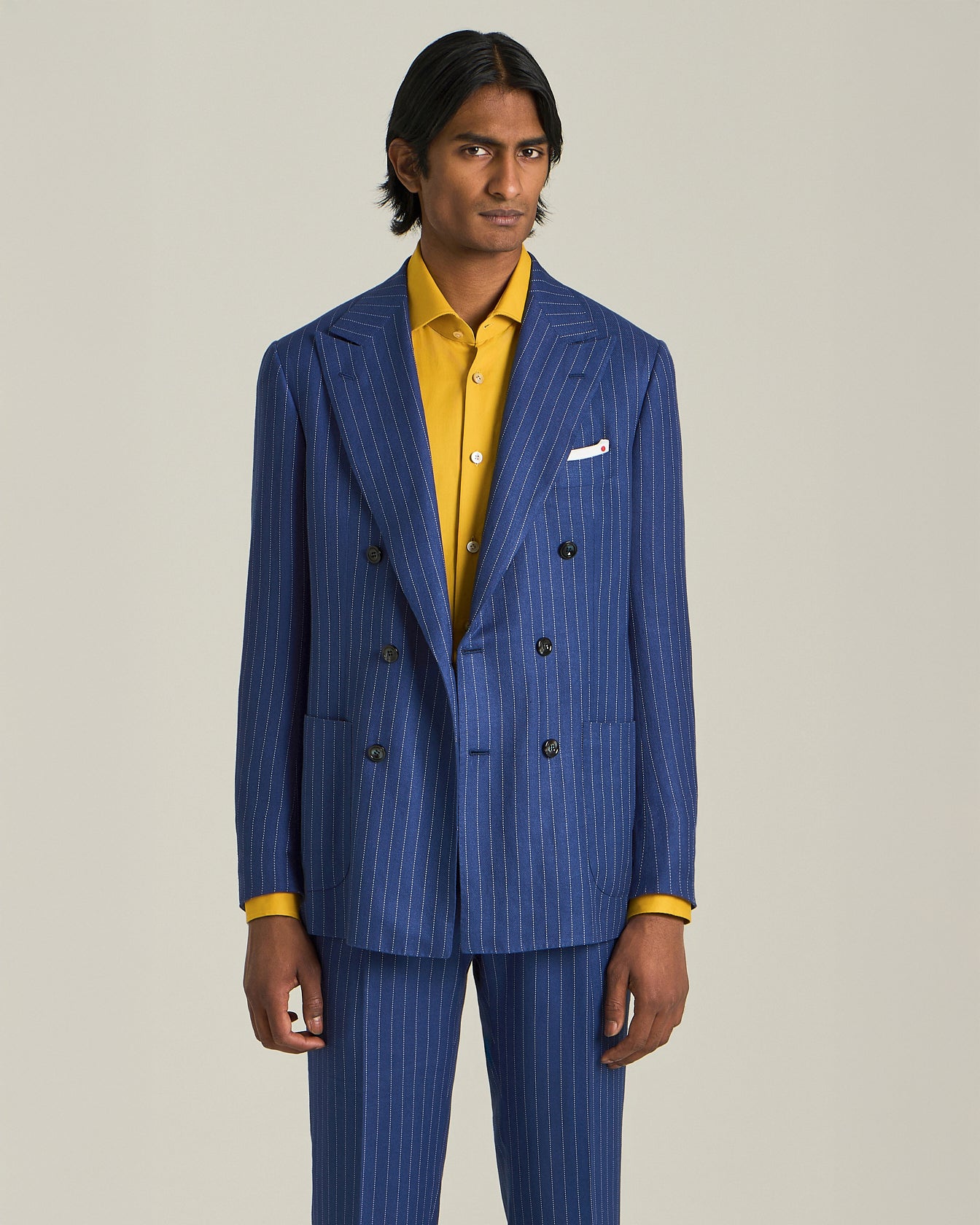The Crucial Guide to Picking the Suitable Tailored Suit for You
Picking the optimal tailored fit is a nuanced process that needs careful factor to consider of various variables, including textile types, body shapes, and fit preferences. Recognizing the features of materials such as woollen and linen can substantially influence your option, while an accurate evaluation of your body kind guarantees the match accentuates your finest attributes. Additionally, customizing your suit through shade and layout choices can improve your specialist image. Nevertheless, the equilibrium between high quality and spending plan remains an essential aspect. As we explore these aspects additionally, the course to your perfect tailored fit will certainly become increasingly clear.
Recognizing Match Fabrics
When picking the best customized fit, exactly how does one navigate the diverse array of fabrics readily available? The selection of textile dramatically affects the fit's appearance, comfort, and sturdiness. Common options consist of woollen, cotton, linen, and synthetic blends, each providing distinctive features fit for different occasions and climates.
Woollen is the most popular selection for customized fits, celebrated for its versatility and capacity to curtain elegantly. It provides a variety of weights, from light-weight for summertime to heavier alternatives for wintertime. Cotton, while breathable and comfortable, tends to crease much more easily, making it appropriate for casual or semi-formal setups.
Linen is another choice, renowned for its lightweight and breathable residential properties, ideal for cozy weather condition. However, it additionally tends to wrinkle rapidly, which can develop a relaxed visual. Artificial blends, often a blend of polyester and wool, supply added toughness and resistance to wrinkling, making them practical for daily wear.
Ultimately, when selecting a textile, consider the fit's planned use, the environment, and individual comfort. A knowledgeable choice not only improves the match's functionality however additionally contributes to general self-confidence and style.
Determining Your Type Of Body
Determining your physique is necessary for selecting a tailored fit that boosts your figure and guarantees a lovely fit. Recognizing your body form allows you to make educated selections concerning suit styles, cuts, and fabrics that match your special shape.
Those with a triangle body type have larger hips and a narrower upper body, while the inverted triangular attributes more comprehensive shoulders and a narrower waistline and hips. The oblong body type usually has a fuller belly, and the hourglass is defined by a well-proportioned breast and hips with a specified midsection.
Determining your body type involves assessing your percentages and recognizing exactly how they impact your overall appearance. Take measurements of your shoulders, upper body, midsection, and hips. This data will lead you in picking a fit that highlights your strengths while reducing any locations of worry. Keep in mind, the goal is to attain a balanced look that shows self-confidence and elegance.
Choosing the Right Fit
The fit of a customized suit is vital, as it directly influences both comfort and look. Attaining the best fit includes numerous key elements, including shoulder positioning, upper body dimension, and sleeve size (TAILORED SUITS PERTH). The shoulders should ideally rest level with no bulging or pinching, offering an organized appearance that boosts the overall silhouette

Sleeve size is similarly crucial; the cuff must subject a part of the shirt sleeve, typically around half an inch, permitting a harmonious mix of appearances and shades.
Pant fit needs to additionally be meticulously thought about. The midsection must sit easily without sagging or digging in, while the size should simply skim the tops of your shoes, providing a tidy finish.
Personalization Options
Personalization choices play an important function in elevating a customized fit from conventional to extraordinary, permitting people to reveal their distinct design and choices. The process starts with material selection, where a varied range of products-- such as woollen, linen, or cashmere-- offers possibilities to show individual taste and match the celebration.
Next, consider shade and pattern options. Classic alternatives like navy or charcoal are ageless, while bolder hues and detailed patterns can showcase individuality. Custom-made tailoring additionally permits changes to lapels, pocket styles, and switches, boosting both aesthetic appeals and functionality.
The fit is additional improved through individualized measurements, making sure that every facet of the fit matches the user's physique. Information such as monogramming can include a touch of individuality, developing a fit that really feels uniquely your own.

Budgeting for Your Suit
Budgeting for your suit involves cautious consideration of various elements that can influence the general expense. The textile plays a substantial duty in prices. High-grade products such as woollen, silk, or cashmere normally regulate higher prices, while synthetic you can try here blends might be extra economical.
Following, think about the tailoring process itself. Bespoke matches, which are made to your specific specs, are normally much more expensive than tailor-made or off-the-rack alternatives. The degree of craftsmanship and detail, consisting of hand-stitched aspects, also impacts the last cost.
Furthermore, it is essential to consider changes. Also a well-tailored suit might need adjustments to achieve the best fit - TAILORED SUITS PERTH. Alloting funds for these alterations can guarantee that your investment repays in both comfort and look
Establishing a clear budget plan while prioritizing your desired functions will certainly direct you in making an enlightened option without endangering quality. Eventually, spending in a tailored fit should show both page your design and financial convenience.
Conclusion
